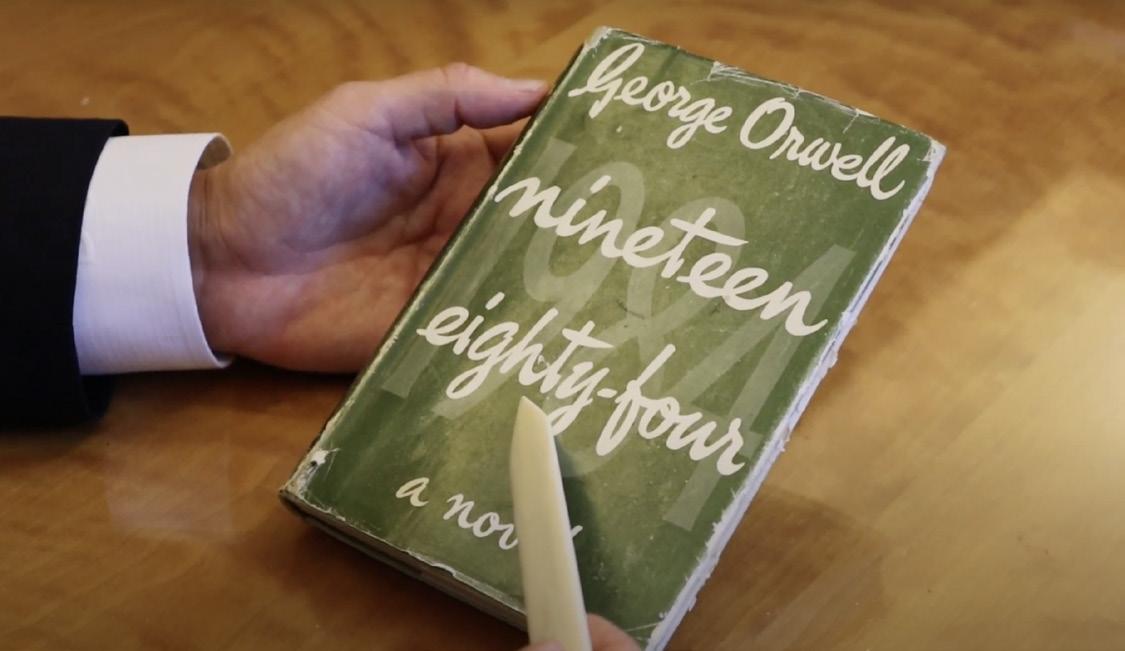
2 minute read
Video project showcases UMW’s rare books
Within the walls of Simpson Library is UMW’s own collection of 2,000 rare books, including many first editions and signed volumes. This semester, Antonio Barrenechea, professor of English and faculty liaison for special collections, and Nick Onorato, a senior communication and digital studies major, are creating a series of videos highlighting books in UMW’s collection.
“A rare book is a book that is both scarce and desirable,” said Barrenechea. These books may either be scarce “due to a limited print run, or through the ravages of time. Sometimes it’s both.”
Barrenechea and Onorato’s first video spotlights George Orwell’s “Nineteen EightyFour.” The library owns a British first edition of the book from 1949 in the original dust jacket.
Next up is “Ulysses” by James Joyce. “It’s really old,” Onorato said. “Some of the pages aren’t cut fully and still connect, the bindings are torn apart, it’s really interesting.”
UMW holds a first edition copy of “Ulysses,” the 552nd book in the first print run from 1922.
“A rare book in the collection is also desirable in that it holds historical importance for readers,” said Barrenechea. “In the case of ‘Ulysses,’ it is one of the greatest novels ever written and a summation of modernist literary experimentation, a masterpiece that also survived an obscenity trial.”
According to Angie Kemp, head of special collections, the collection contains works that are centuries old.
“Our oldest book dates back to 1496,” she said. “It’s been rebound, but we also have books from the 16th and 17th centuries. Probably one of the biggest strengths of the collection is the James Joyce collection, which includes the first edition of the ‘Ulysses.’”
Onorato shoots and edits the videos, while Barrenechea talks about the books. They hope to produce four videos, highlighting different rare books to bring awareness to UMW’s special collection.
“I would like to make UMW students and faculty more aware of their own treasures,” said Barrenechea. “I would also love to have more outside scholars be aware of how strong our collections are—particularly in Joyce studies.”
Onorato also hopes to bring attention to the special collection, as he learned about the collection in Barrenechea’s first-year seminar class examining “Dracula.”
“The main reason why we’re doing these videos is to make people aware,” said Onorato. “The only reason I know about it is that I had Dr. Barrenechea for my FSEM, and he brought our class there because he showed us ‘Dracula.’”
Barrenechea and Onorato have enjoyed the project, despite its challenges.
“Trying to get a feel for the holdings in the collection takes time because there are around 2,000 books in the collection,” said Barrenechea. “Familiarity for me involves touching, opening, and studying the books. It is difficult to write substantively about our holding strengths without that.”
This project developed through Barrenechea’s love of books.
“Aside from living in bibliophile heaven—as you can tell, I love books, have always loved books—I’ve thoroughly enjoyed corresponding with









